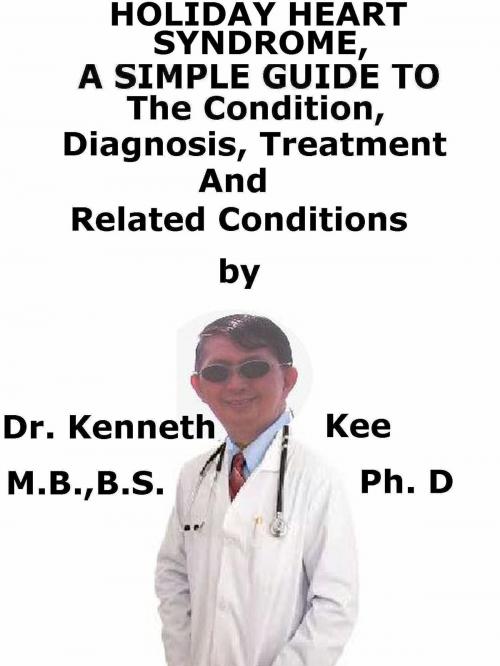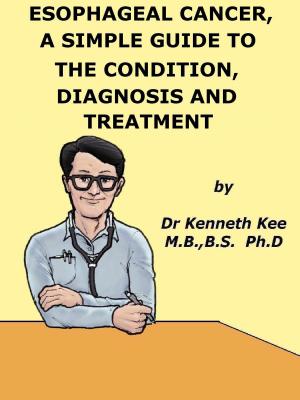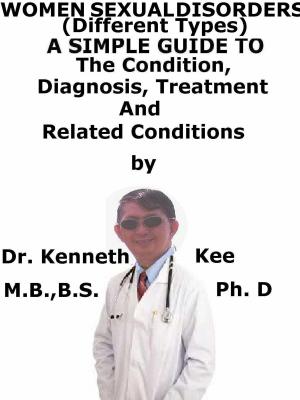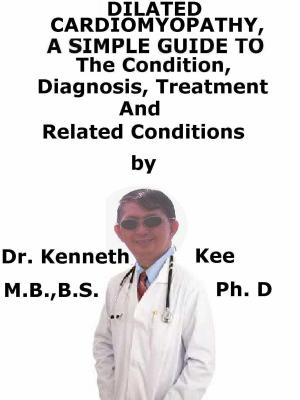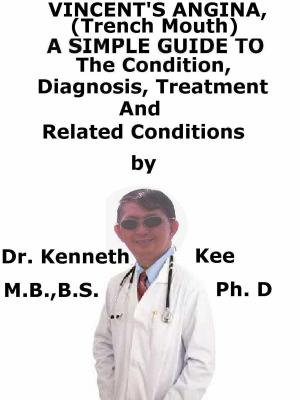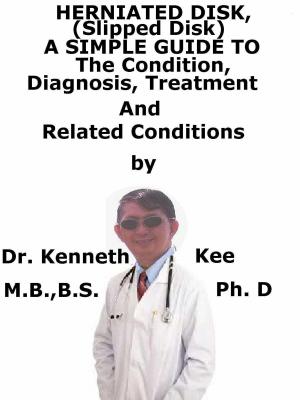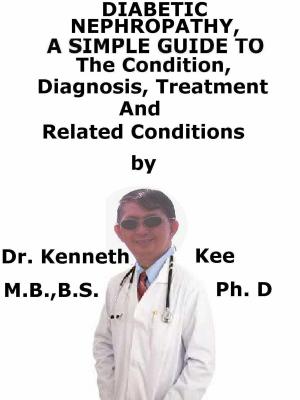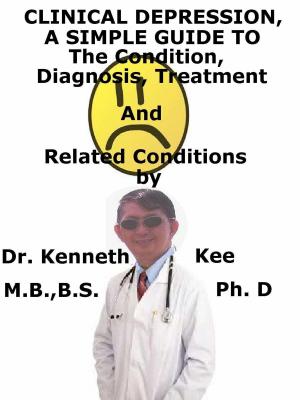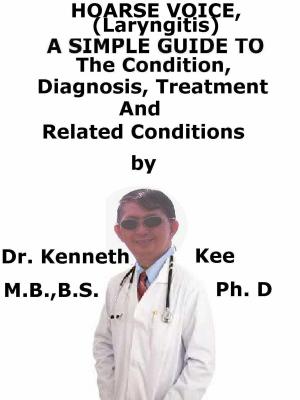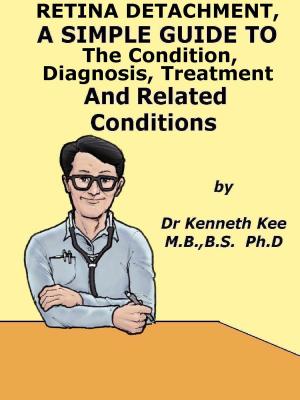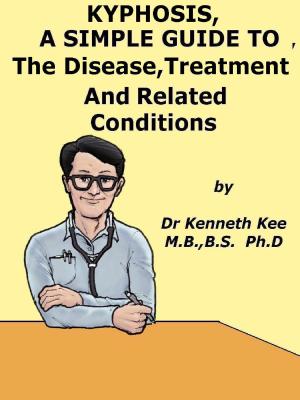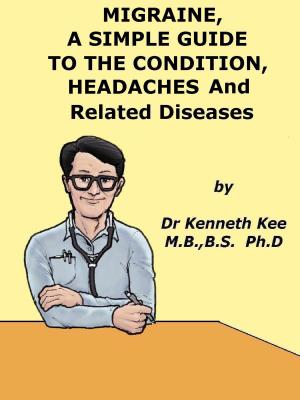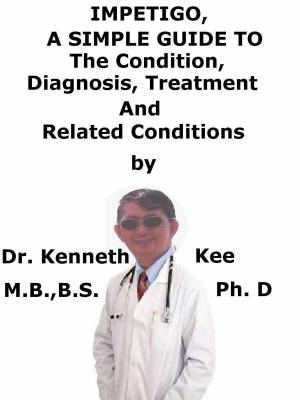Holiday Heart Syndrome, A Simple Guide To The Condition, Diagnosis, Treatment And Related Conditions
Nonfiction, Health & Well Being, Medical, Specialties, Internal Medicine, Cardiology, Health, Ailments & Diseases, Heart| Author: | Kenneth Kee | ISBN: | 9781370850464 |
| Publisher: | Kenneth Kee | Publication: | April 16, 2018 |
| Imprint: | Smashwords Edition | Language: | English |
| Author: | Kenneth Kee |
| ISBN: | 9781370850464 |
| Publisher: | Kenneth Kee |
| Publication: | April 16, 2018 |
| Imprint: | Smashwords Edition |
| Language: | English |
This book describes Holiday Heart Syndrome, Diagnosis and Treatment and Related Diseases
Holiday Heart Syndrome is a severe medical disorder normally occurring during the holiday season of Thanksgiving, Christmas, or New Year.
This disorder happens when people over-indulge in taking large quantities of food, alcohol, salt, and caffeine.
The main medical manifestation of Holiday Heart Syndrome is anomaly in the rate and rhythm of the heart
The most often seen arrhythmia is atrial fibrillation, in which the atria (top chambers of the heart) quiver or fibrillate inducing the heart to beat irregularly and often quite fast.
This can make patients feel acutely sick.
If left untreated, this disorder can lead to possible severe complications like stroke or a heart attack.
A more regular arrhythmia, called atrial flutter, or premature beats (extra beats) coming from either the top or bottom chambers may be observed as well.
Holiday Heart Syndrome can also produce considerable injury to the heart and lead to another serious disorder called cardiomyopathy in which there are enlarged heart muscles.
This disorder was most often observed in patients without underlying heart disease
This acute holiday heart syndrome can happen in the situation of a high degree of stress, illness or dehydration
There has been shown a link between excessive alcohol ingestion (binge drinking) and onset of a heart rhythm disturbance
Some arrhythmias linked with holiday heart syndrome after binge drinking can lead to sudden death
Symptoms normally resolve themselves within 24 hours.
Holiday heart syndrome can also produce abnormal burning sensation during urination and the feeling of passing blood just like a kidney stone.
This generally subsides in days or weeks.
Symptoms
The symptoms of holiday heart are linked to an irregular and often fast heart rate.
1.Palpitations (a feeling of pounding in the chest, racing or skipping heart beats),
2.Shortness of breath particularly with exertion,
3.Fatigue,
4.Chest discomfort or pain or
5.Dizziness and feeling faint.
Diagnosis
Normally, if a person has symptoms indicative of Holiday Heart Syndrome then he or she should be brought to the emergency room immediately
A 12-lead electrocardiography is necessary to rule out other cardiac pathology such as:
1.Ischemia,
2.Infarction,
3.Pulmonary embolism, or
4.Hypertrophy.
Echocardiography has become the standard diagnostic method to evaluate:
1.Chamber enlargement,
2.Left ventricular (LV) wall motion abnormalities,
3.Hypertrophy,
4.Valvular disease, and
6.Systolic dysfunction.
Treatment
Once the patient reaches the emergency room then routine ECG monitoring will be done to examine the status of the heart rate.
In some patients treatment with beta blockers may be given for regulating the heart rate in case if the atrial fibrillation persists for more than 24 hours.
In circumstances where beta blockers or other medicines to regulate the heart rate can not be given then cardioversion may be indicated.
In most cases of Holiday heart Syndrome, the patient is admitted into hospital for at least 24 hours for observation and to reduce the heart rate.
Patients who are young and do not have any underlying heart anomalies and are perfectly healthy otherwise can be discharged once their heart rate goes down
The treatment is intravenous diltiazem which regulated the ventricular rate.
The patient may also receive fluids through an IV (a catheter placed into the vein) to re-hydrate the patient.
The taking of alcohol is contraindicated.
If the doctors are worried that the patient may have undiagnosed heart disease, they may admit the patient to the hospital for further evaluation.
TABLE OF CONTENT
Introduction
Chapter 1 Holiday Heart Syndrome
Chapter 2 Causes
Chapter 3 Symptoms
Chapter 4 Diagnosis
Chapter 5 Treatment
Chapter 6 Prognosis
Chapter 7 Atrial Fibrillation
Chapter 8 Coronary Heart Disease
Epilogue
This book describes Holiday Heart Syndrome, Diagnosis and Treatment and Related Diseases
Holiday Heart Syndrome is a severe medical disorder normally occurring during the holiday season of Thanksgiving, Christmas, or New Year.
This disorder happens when people over-indulge in taking large quantities of food, alcohol, salt, and caffeine.
The main medical manifestation of Holiday Heart Syndrome is anomaly in the rate and rhythm of the heart
The most often seen arrhythmia is atrial fibrillation, in which the atria (top chambers of the heart) quiver or fibrillate inducing the heart to beat irregularly and often quite fast.
This can make patients feel acutely sick.
If left untreated, this disorder can lead to possible severe complications like stroke or a heart attack.
A more regular arrhythmia, called atrial flutter, or premature beats (extra beats) coming from either the top or bottom chambers may be observed as well.
Holiday Heart Syndrome can also produce considerable injury to the heart and lead to another serious disorder called cardiomyopathy in which there are enlarged heart muscles.
This disorder was most often observed in patients without underlying heart disease
This acute holiday heart syndrome can happen in the situation of a high degree of stress, illness or dehydration
There has been shown a link between excessive alcohol ingestion (binge drinking) and onset of a heart rhythm disturbance
Some arrhythmias linked with holiday heart syndrome after binge drinking can lead to sudden death
Symptoms normally resolve themselves within 24 hours.
Holiday heart syndrome can also produce abnormal burning sensation during urination and the feeling of passing blood just like a kidney stone.
This generally subsides in days or weeks.
Symptoms
The symptoms of holiday heart are linked to an irregular and often fast heart rate.
1.Palpitations (a feeling of pounding in the chest, racing or skipping heart beats),
2.Shortness of breath particularly with exertion,
3.Fatigue,
4.Chest discomfort or pain or
5.Dizziness and feeling faint.
Diagnosis
Normally, if a person has symptoms indicative of Holiday Heart Syndrome then he or she should be brought to the emergency room immediately
A 12-lead electrocardiography is necessary to rule out other cardiac pathology such as:
1.Ischemia,
2.Infarction,
3.Pulmonary embolism, or
4.Hypertrophy.
Echocardiography has become the standard diagnostic method to evaluate:
1.Chamber enlargement,
2.Left ventricular (LV) wall motion abnormalities,
3.Hypertrophy,
4.Valvular disease, and
6.Systolic dysfunction.
Treatment
Once the patient reaches the emergency room then routine ECG monitoring will be done to examine the status of the heart rate.
In some patients treatment with beta blockers may be given for regulating the heart rate in case if the atrial fibrillation persists for more than 24 hours.
In circumstances where beta blockers or other medicines to regulate the heart rate can not be given then cardioversion may be indicated.
In most cases of Holiday heart Syndrome, the patient is admitted into hospital for at least 24 hours for observation and to reduce the heart rate.
Patients who are young and do not have any underlying heart anomalies and are perfectly healthy otherwise can be discharged once their heart rate goes down
The treatment is intravenous diltiazem which regulated the ventricular rate.
The patient may also receive fluids through an IV (a catheter placed into the vein) to re-hydrate the patient.
The taking of alcohol is contraindicated.
If the doctors are worried that the patient may have undiagnosed heart disease, they may admit the patient to the hospital for further evaluation.
TABLE OF CONTENT
Introduction
Chapter 1 Holiday Heart Syndrome
Chapter 2 Causes
Chapter 3 Symptoms
Chapter 4 Diagnosis
Chapter 5 Treatment
Chapter 6 Prognosis
Chapter 7 Atrial Fibrillation
Chapter 8 Coronary Heart Disease
Epilogue
